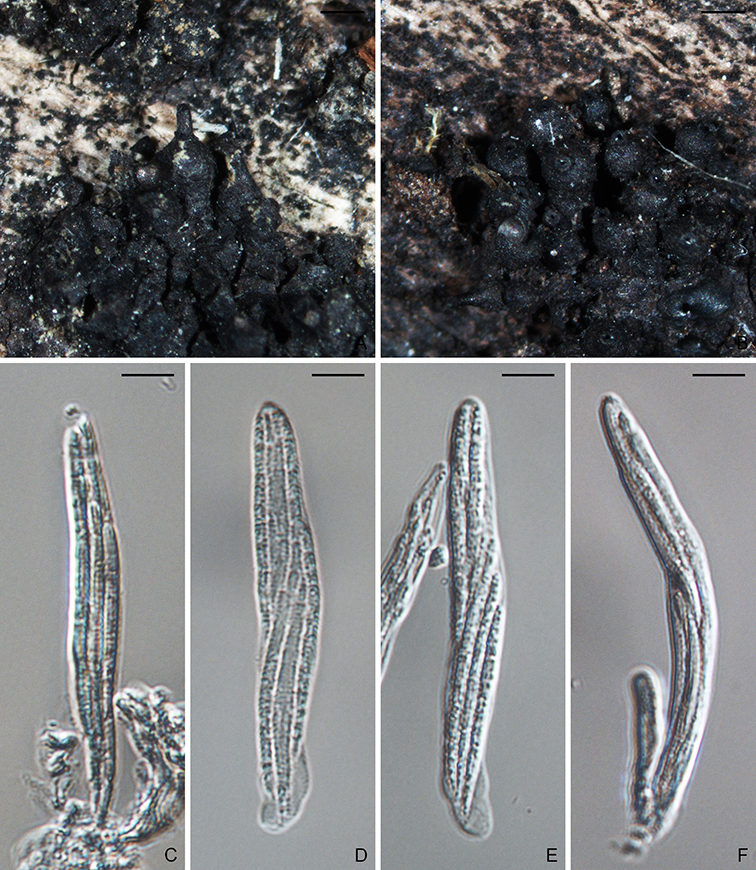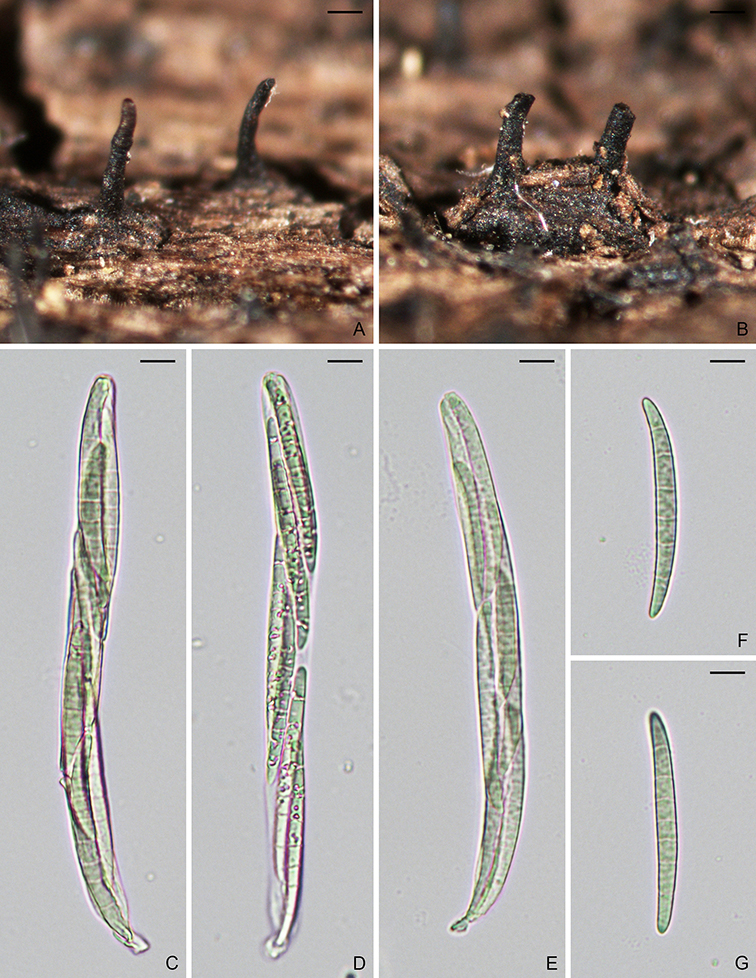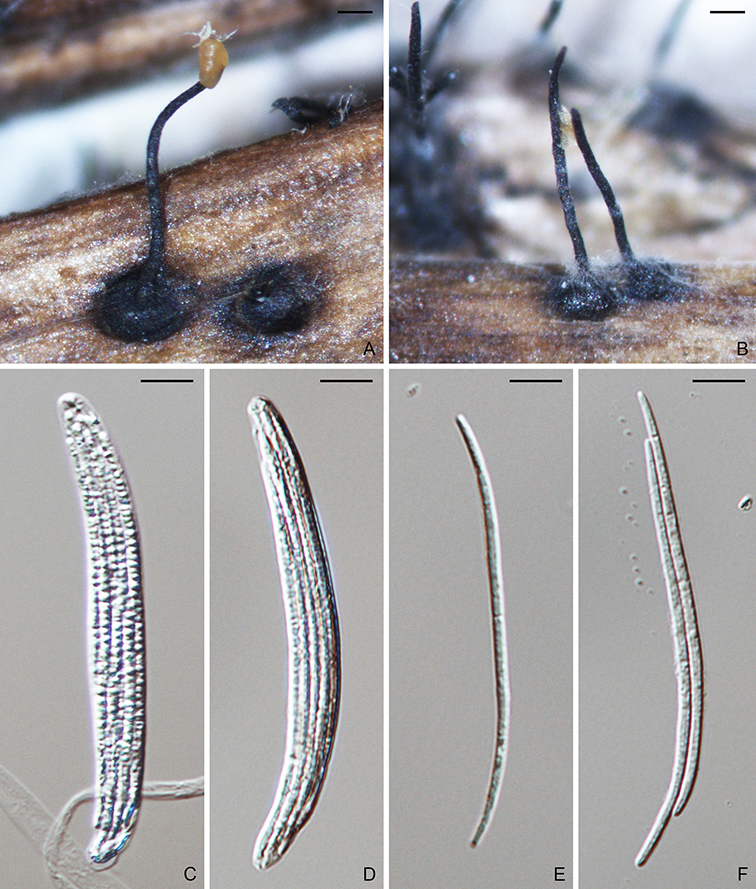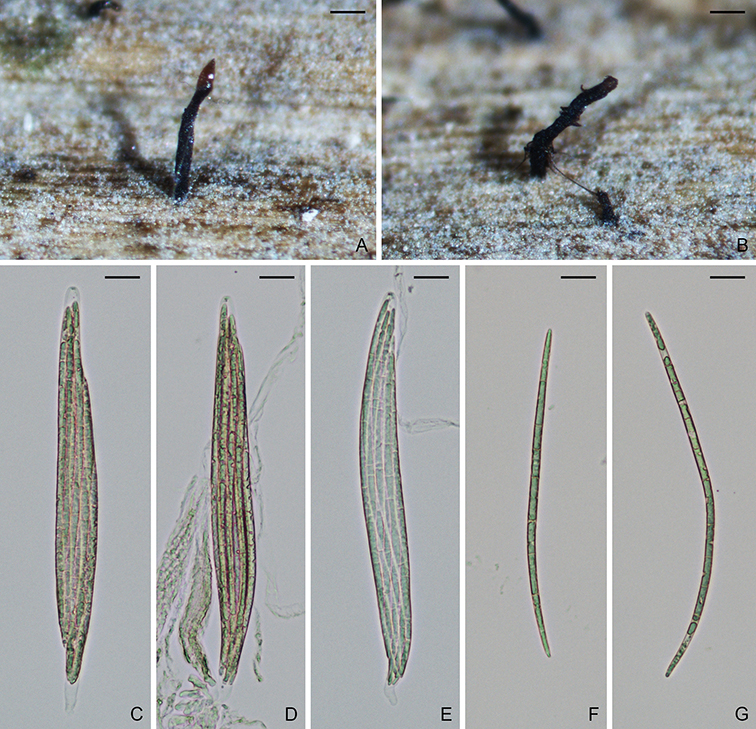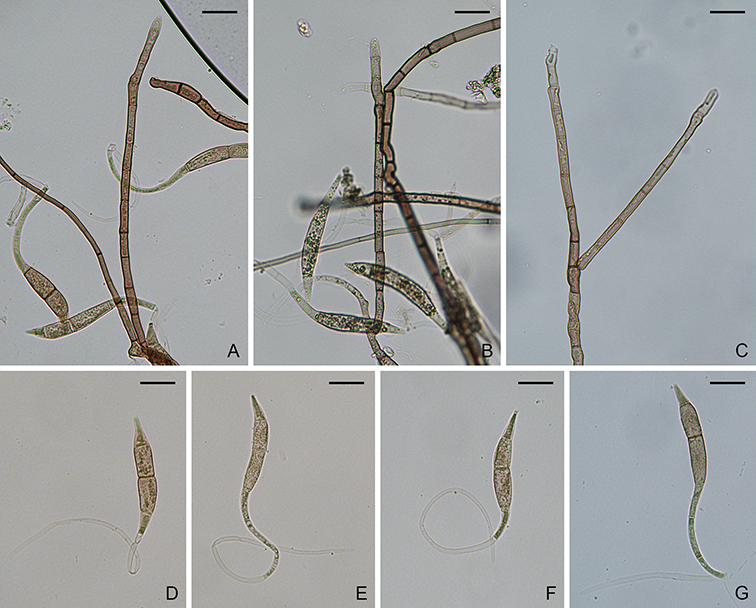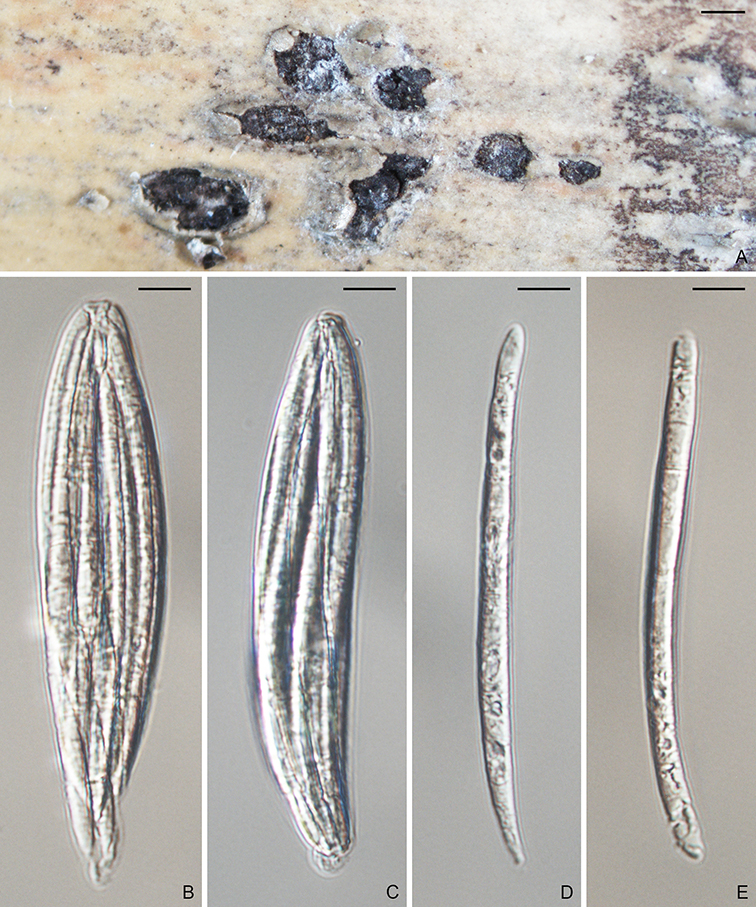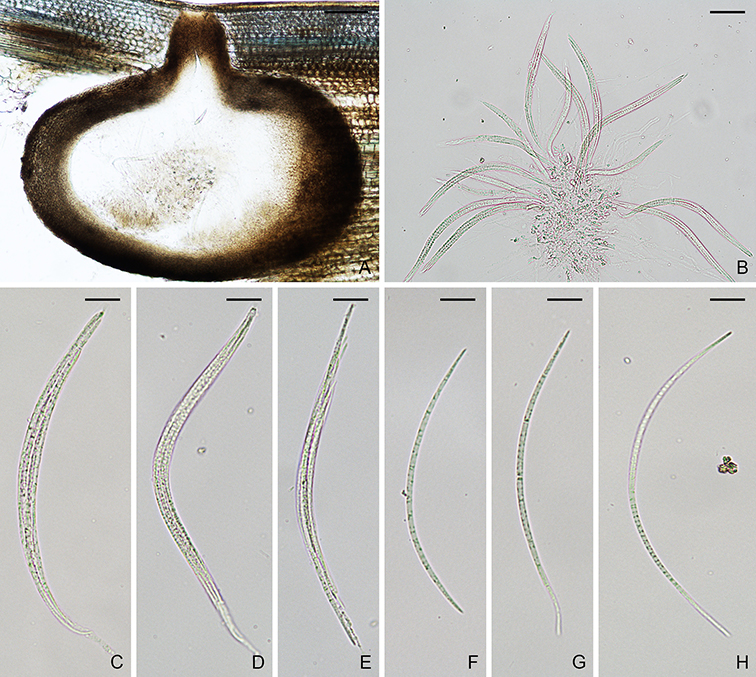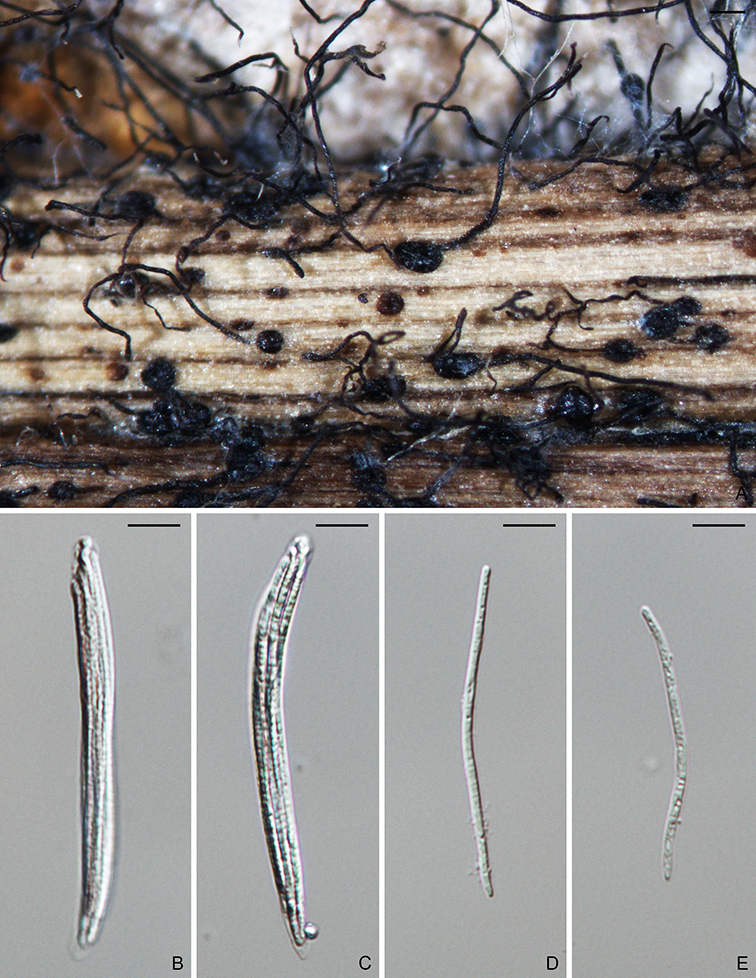Post Views:
1,602
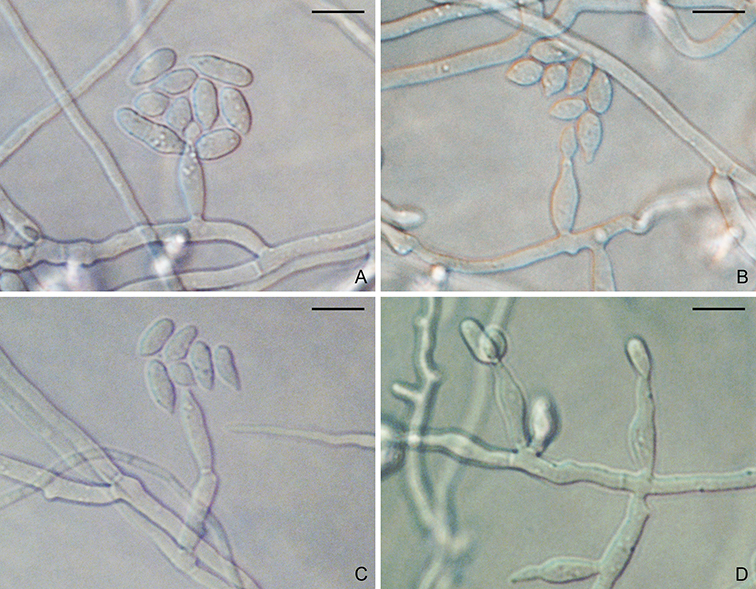
Figure. Magnaporthiopsis incrustans (AF14SW17). A–D. Conidiophores and conidia. Scale bars: A–D = 10µm.
Magnaporthiopsis incrustans (Landsch. & N. Jacks.) J. Luo & N. Zhang, Mycologia 105(4): 1024 (2013).
MycoBank: MB802974.
≡ Gaeumannomyces incrustans Landsch. & N. Jacks., Mycol. Res. 93(1): 55 (1989).
Ascomata perithecial, immersed, solitary to gregarious, black, 179–420 µm diam, with a cylindrical, black neck, 252–672 × 84–147 µm. Paraphyses unbranched, septate, hyaline, dissolving at maturity. Asci 8-spored, unitunicate, clavate to cylindrical, 65–107 × 6–11 µm, with a refractive ring. Ascospores 3–4-seriate, fusiform, slightly curved, 3–5-septate, not constricted at septum, hyaline, smooth, 33–53 × 2–4 µm (Sexual state description from Landschoot and Jackson, 1989a). Asexual state phialophora-like. On CMA, hyphae branched, septate, hyaline, smooth, 2–5 µm diam. Conidiophores micronematous, solitary, erect, straight or curved, unbranched or sparsely branched, hyaline, smooth, 1–3-septate, 8–35 × 2–5 µm. Conidiogenous cells phialidic, erect, terminal or intercalary, hyaline, smooth, 8–17.5 × 3–6 µm. Conidia aggregated in slimy heads, ovoid to ellipsoidal, straight or slightly curved, aseptate, hyaline, smooth, 5–11 × 2–5 µm.
Colonies on PDA 6.5 cm diam after 7 days at 25 °C in dark; surface floccose, parrot green; aerial mycelium yellowish; reverse cedar green. Colonies on CMA reaching 6 cm after 7 days in dark at 25 °C; surface pale yellow-green; aerial mycelium sparse; reverse pale yellow-green.
Typification: Holotype DAR59042. Ex-holotype cultures ATCC64418, ATCC64416.
Gene sequences: JF414867 (18S), JF414843 (ITS), JF414892 (28S), JF710386 (MCM7), JF710437 (RPB1), JF710412 (TEF1).
Genome sequences: SRX795321 (genome), SRX798625 (transcriptome).
Specimens examined: USA, New Jersey, Adelphia Farm, on roots of Panicum virgatum, 8 Aug. 2014, J. Luo, RUTPPAF14SW17; ibid., New Brunswick, on roots of Festuca brevipila, 19 Jul. 2018, H. Chen and J. Murphy, RUTPPF2BHF1, RUTPPBHF9; Indiana, West Lafayette, on roots of Festuca, 15 Aug. 2014, T. Creswell, RUTPP1801540-11.
Hosts/substrates: From roots of Cynodon, Festuca, Poa annua, P. pratensis, and Zoysia (Poaceae).
Distribution: USA (Georgia, Indiana, Kansas, Maryland, Massachusetts, New Jersey, New York).
Copyright 2022 by The American Phytopathological Society. Reproduced, by permission, from Luo, J., and Zhang, N. 2022. The Rice Blast Fungus and Allied Species: A Monograph of the Fungal Order Magnaporthales (https://my.apsnet.org/APSStore/Product-Detail.aspx?WebsiteKey=2661527A-8D44-496C-A730-8CFEB6239BE7&iProductCode=46826). American Phytopathological Society, St. Paul, MN.
